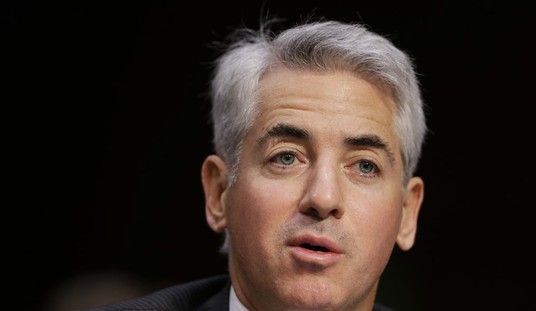“The fire-breathing Rebels arrive at the party early,
Their khaki coats are hung in the closet near the fur.
Asking handouts from the ladies, while they criticize the lords.
Boasting of the murder of the very hands that pour.
And the victims learn to giggle, for at least they are not bored.
And my shoulders had to shrug
As I crawl beneath the rug
And retune my piano.”
– Phil Ochs
Karl Marx once famously said that a specter was haunting Europe and that specter was Communism. Today, specters are haunting the world. They are “progressivism” and Islamism. Yet these are misunderstood because the progressives want to pretend they are liberals and the Islamists want to pretend to be normal, technically pious, traditional Muslims of a century or half century ago.
Islam is a religion, Islamism is a revolutionary movement. Liberalism is a center-to-left political movement, progressivism is a revolutionary movement.
In fact Islam/Islamism and liberalism/progressivism are parallel in many ways. Their differences are distracting, one as a religion and one as an atheist non-religious ideology.
For example; progressivism and Islamism both seek to be political monopolies and ideologies. They’re comprehensive. Both use intimidation, though progressivism is more verbal and Islamism is more violent. Whenever anyone takes one to task, they insult the whole system. They are not rational systems and are not open to debate.
Both invite large elements of opportunism and careerism. People who see the winning side endorse them to benefit their own careers, not out of genuine belief.
Both of these institutions should be studied coherently. They’ve not been studied well on political terms. I will explore Islamism further in an upcoming article.
The English Civil War from 1642-1651, the struggle between monarchy and religious political ideologies, mirrors what Islamism is going through now. This was the West’s struggle between “Christianity” and “politics” which is now the equivalent of the struggle between “Islamism” and “politics.”
This could be called a Manichean model. One side is completely right, and one side is completely wrong. Therefore, a democratic dispute would not be possible.
Phil Ochs, quoted above, was creatively mocking the situation. He showed this ambiguity. Incidentally, I was his guide at the 1968 Democratic Convention in Chicago.
Here was the new professional elite: so pompous, so arrogant. They were benefiting materially, yet were contentious, simultaneously arrogant yet luxury-loving, but also virtuous and well-intentioned, superior. What more perfect combination would there be but the well-heeled Bill Ayers, the son of a senior Detroit automaker, and yet a bombing revolutionary who did nothing to deserve his good estate!
Imagine! Someone with a gold spoon in his mouth made a scruffy revolutionary, and yet the recipient of hundreds of thousands of dollars from conservative Republicans, superior to everyone. Surely a new ruling class if ever there was one.
You get the privilege but pretend you are the victim. You can take a lot of wealth while pretending to be the champion of the downtrodden.
Nowadays nobody seems to know what “progressive” means, though it is in the history books. From around 1910-1924, “Progressive” meant liberal, which was not anything like what it is today. When Theodore Roosevelt was disappointed by his chosen successor, William Taft, he formed the Bull Moose Party from the Republican, often referred to as “the progressive party.”
The progressive party of that day did well among people who wanted to continue liberalism.
FDR was always conscious that the American system might turn sharply to the left if he failed, leading to some kind of Obamaesque situation. Remember there was large scale violence (mostly labor related) and an extremely left-oriented culture war. People forget that there was a looming radical threat at that time, for example the Labor Movement.
In 1924, Robert Lafollette decided that his party, Republican, was not liberal enough, and ran under the “progressive” title. He actually got 17% of the popular vote, but concluded that this was not the amount of people needed to win an election, even though this was a rare opportunity to create a three-party system. Ultimately, he decided that the country was not left enough. The brilliance of President Roosevelt was in playing the centrist view. There were communists and progressives and horrid “reactionary republicans.”
Roosevelt, however, pitted the idea that the far left (i.e. communists and socialists) were the only other alternative to the “reactionary republicans.” Often, liberals said that these were the only choices.
During the 1924 election and the 1930s, Earl Browder and other Communist Party leaders used the word “progressive” as a cover. In 1948, it was the name chosen by the Communist Party for its front party.
Consider how the Communist Party approached the New Deal. Here’s that party’s leader, Earl Browder, in a 1936 interview:
“Roosevelt was being pulled by some to the left and by the others to the right. Consequently, it would be wrong for ‘all progressives to unite around Roosevelt as the sole means to defeat reaction.’ …It seems that personally Roosevelt and [Republican leader Alf] Landon look pretty much alike to Browder.”
Incidentally, I’ve never seen anyone note that when the 2010 electoral organization’s far-left organized, it was called Progressives for Obama. The head was Carl Davidson, the former chief of SDS in the 1960s.
What the Obama movement did was to combine philosophical idealism, the farthest left of the old democratic party, and the lumpen proletariat, convincing more moderate liberals that this more radical movement identified with them, while everyone else was reactionary (as was done in the 1930s). Furthermore the Republican leadership was headed by an unimaginative “rhino.”
If you want to understand Obama and his movement, you have to go back to the 1960s and 1970s. For more on this, see Barry Rubin, Silent Revolution: How the Left Rose to Political Power and Cultural Dominance (Harper Collins, forthcoming April 2014).
*****
Cross-posted from Rubin Reports
illustration courtesy shutterstock / Lario Tus












Join the conversation as a VIP Member